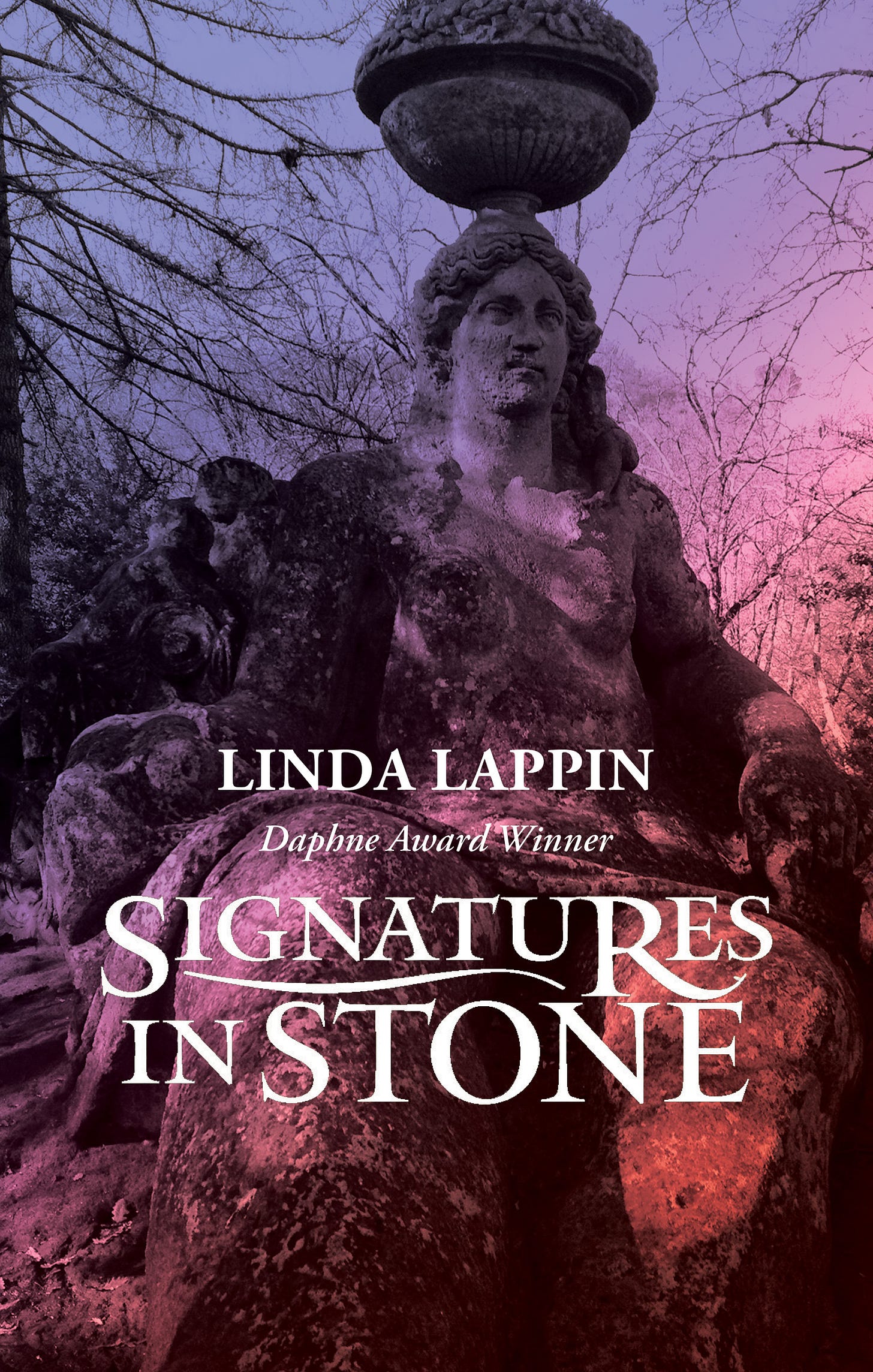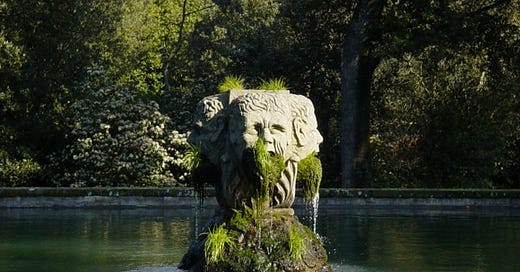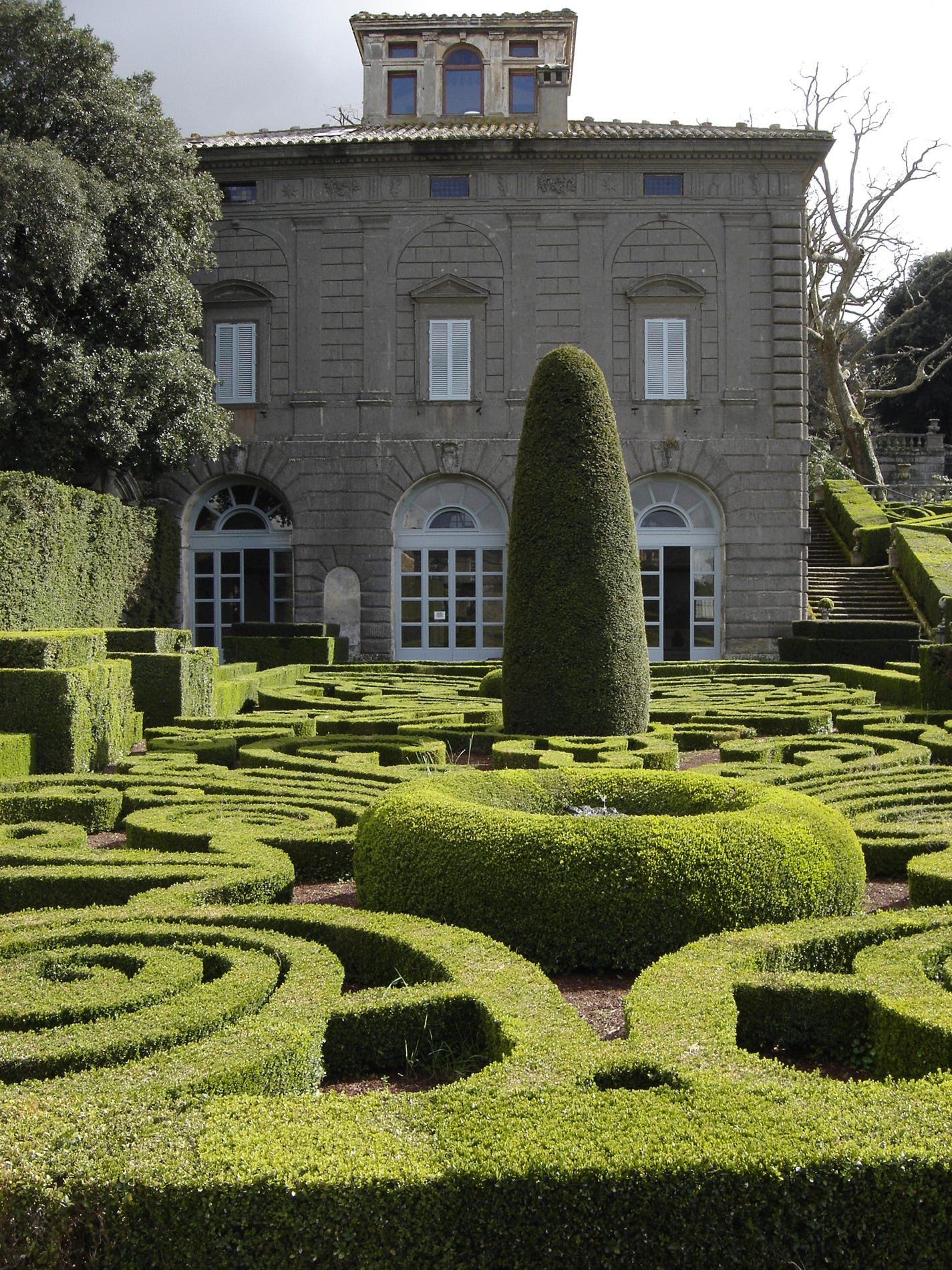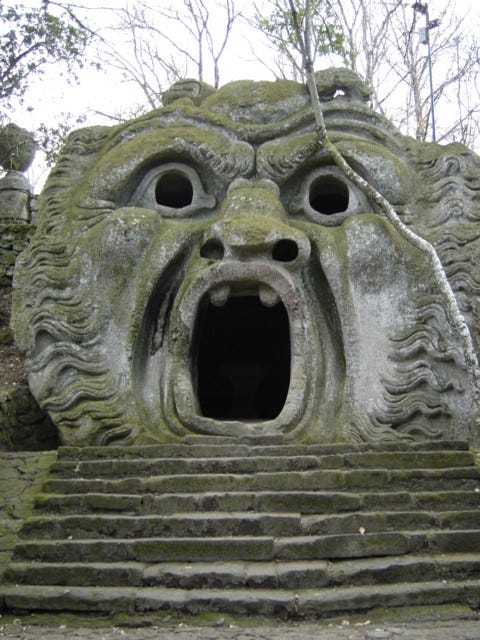My Discovery of Formal Gardens
Early black and white photos in the family album show me as a toddler scampering down the pathways of a garden, in between tall walls of spiraling topiary. I have no idea where it was—Florida perhaps. The memory is somehow married to my first experience of the ocean & comes with the smell of wet sand and boxwood, the tickling of coquinas in my outstretched palm.
Of this place I can remember: sunbaked sandstone walls, feathery flowers morphing into birds, the dry whispering of Spanish moss in a salty breeze I could taste on my lips and skin. Inscrutable statues blackened by age, blistered by pigeon droppings --the first works of art perhaps, I ever noticed.
What I was discovering then was that there are doors in our world, opening onto places of pure joy. Sometimes those doors may be the covers of a book; other times the gateway to a garden. For most of my adult life, I have been searching for those thresholds to elsewhere—into an enchanted space which is also a manifestation of something in myself.
Now living in the storied land of Italy, I am fascinated by its landscape narratives. A garden is a picture book – where you, the visitor, may be character, author, reader all rolled into one—of a story unfolding outside time.
Italian Garden Magic
For the Italian garden designers of the Renaissance and baroque eras, gardens were not just collections of plants, fountains, and statuary. They were living books of wisdom, meant to be read with the intellect as well as the senses. Gardens could impart life teachings, chart a path to initiation, self-knowledge or redemption. They could cast you into a trance-like state, or transport you back in time to witness the moment of cosmic creation. They could heal an illness, soothe a sorrow, or elevate your spirit. They could even change your fate.
This magic was achieved by means of the stories, often drawn from Greek myths, holy scripture, or alchemy, which were woven into a garden’s landscape: hills, lakes, islets, parterres, vistas, pathways, labyrinths, grottos—and in the arrangements of specific trees, plants, statues, fountains, emblems. For all these diverse features were charged with astrological meaning and elemental power. Each plant, mineral, animal, or statue in a garden possessed its own unique signature: an essence transmitted through its astrological affinity to a specific planet.
Certain plants transmitted the curative powers of Mars or Mercury. A statue of Apollo might communicate the life-enhancing energies of the sun. A statue of the mother goddess, the fertilizing power of the moon. A statue of Venus might evoke a receptivity to love. Emblems, instead, represented the individual owners of a garden, the addressee of the magic— their history, ancestry, and even political power.
Water, a spiritual substance, often functions as a guiding thread throughout a garden, from gushing waterfalls to mirror pools. A statue might point out a vista which awakens transcendent feelings, thick branches weave a dark tunnel through which you must pass to find your way out, a mossy stairway may lead down to a grotto from which you must emerge, born again.
Symbols, plants, pathways, and fountains combined their forces to create a nurturing environment that could feed both body and soul, while neutralizing negative circumstances of health or destiny.
The sculpture gardens of Renaissance Italy were designed also as environments of pleasure, love, contemplation, well-being, as well as spiritual renewal, all reinforced by magnificent plant displays of the changing seasons. These gardens were also furnished with pavilions where music could be performed or picnics enjoyed, secluded corners where seekers might meditate in private or where lovers meet in secret.
The Bomarzo Park of Monsters or Sacred Wood
But there is one famous garden which deviates from many conventions of formal Italian gardens – the Sacred Wood of Bomarzo, also known as the Park of Monsters, located near my village house in the Tuscia, the northernmost corner of Lazio. Founded 500 years ago, commissioned by Duke Vicino Orsini, this park is famous for the extraordinary, monumental sculptures scattered across its terrain. Carved from boulders and outcroppings of the volcanic rock peperino, in the very spots they emerge from the ground, these sculptures appear to be springing directly from the earth in random patterns.
This is unique among sculpture gardens, and may be the source of Bomarzo’s uncanny power. In the 16th century, stones were believed to be alive, to grow in the earth like the bones and teeth of our bodies. To remove a stone from the earth – to quarry it – was to kill it. The sculptures in Bomarzo are still rooted in the earth from which they grew.
There is no overall plan to the park or the arrangement of the sculptures. There are no flowers or decorative plants to evoke the changing seasons with splashes of color --only live oaks which cast most of the park in perpetual shade. There are no music pavilions, no concessions to the arts or to pleasure. And most unusual of all is the subject of the sculptures themselves: bizarre imaginary creatures like the twin-tailed mermaid, and weird combinations of figures: an angel on a tortoise. Several enact violent scenes—even a rape. There is a huge ogre with an open mouth carved into a hillside, known as the Hell Mouth. There is also a house leaning precipitously to one side —and when you go inside, you are thrown off balance, even though it’s only an illusion.
The effect of all this is somber and hallucinatory sort of like a combination of an LSD trip and an illustrated alchemical manuscript. You come away from your first visit – especially if you manage to visit on a day when few people are around – with the feeling that there must be a meaning here which has escaped you- but that there is something to search for, to understand, and something you must work to obtain.
Strewn around us were river gods, pouting putti, lustful pans, ogres, nymphs, and beasties- creatures shaken free from the bowels of the earth by some cataclysm, ready to sink back in at a moment’s notice, if the earth should heave again. The sculptures came at you helter skelter, truly like images in a dream. Wherever a crest of rock or boulder protruded from the ground, there had the sculptor’s chisel captured another frenzied spirit of the underworld. —from Signatures in Stone.
Adding to the mystery is the fact that the architect or sculptor who designed the whole project remains unknown, although there are several theories. Some explanations offered are that the statues illustrate scenes from the epic Orlando Furioso, that they are symbolic representations of the events in the life of the Orsinis, that they are figures from Vicino Orsini’s nightmares, illustrations of Greek myths, including the story of Persephone and Hades, or that they conceal an alchemical formula. One generally held belief is that the whole place represents a descent into hell.
All of this worked upon my imagination when I began writing Signatures in Stone – A Bomarzo Mystery. I wanted to discover my own response and my own meanings in the garden, and in doing so, I researched it in depth – particularly with regards to its esoteric associations.
In my novel, crime writer Daphne DuBlanc comes to Bomarzo with other artists to write a new book, but ends up as the prime suspect for a murder that takes place in the park. Daphne has a theory that by reading signs or “signatures” scattered all around us, we can uncover hidden truths and even predict the future. She’ll have to use her intuitive gifts and sleuthing skills to save her skin and solve the crime, and in doing so also will also discover the secret of the Park of Monsters – and of its destructive and redemptive power over all those who wander there.
Signatures in Stone is meant to be a divertissement – as much as murder mystery can be that – but also an enquiry into the ways artists transmit feelings, emotions, desires, states of being, through their work – how these may live through time – and find new hosts in which to take up residence. How they make the past part of the present.

Thank you for visiting. Next time — more about Bomarzo, the concept of “signatures” & coincidence, the Bomarzo sculptures as tarot figures, tantalizing snippets from the novel, and sources from which I drew my inspiration. You can read more about my research on Italian gardens here and here. You can read more about the exotic and esoteric places in Lazio on substack at the Painted Palazzo by Mary Jane Cryan. Signatures in Stone is available through Ingram, Amazon, BN, Bookshop. org & all other booksellers. It’s available for libraries on Hoopla & Overdrive. Buy a copy at your favorite bookseller here with this universal purchase link. Read more about my books at www.lindalappin.net







Bravissima!
Just ordered your new book. The late New College professor Cris Hassold presented a paper on the Bomarzo and other gardens at a Florida conference about ten years ago. Will try to locate and send.